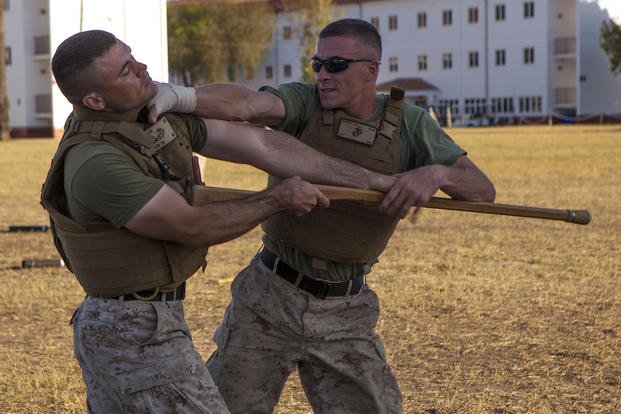Ever been walking near some kids playing, hear them scream to look out, and then you see a baseball coming at your head like a little white freight train?
It may have taken some other form -- a football, golf ball, whatever. But most everyone has experienced this, and everyone has the same reaction.
Your eyes automatically shut, your head turns quickly away, and your hands thrust up to protect your noggin. This is an instinctual survival strategy you don't need to think about to put into action. You can't stop it, and neither can your attacker in a real street defense scenario.
We talk so much about the "first strike" as being a punch, palm-heel, knee to the groin, etc. But rarely do people consider using "distraction" as a self-defense technique.
That's too bad. It works like magic for quickly gaining the offensive advantage in a fight.
If a fight is imminent, your aggressor most likely is expecting a punch of some sort. That expectation prepares his brain to deal with a "known" offense, and it's already staging a response.
But by throwing something into your attacker's face, well. his brain wasn't expecting that. It creates a "break state" that short-circuits his response mechanism and forces his natural instincts to take over, making him flinch away. This gives you more than enough time to follow up with a devastating strike that he won't even see coming.
Here are some tips to making this work:
1. Aim for the eyes
The most vulnerable spot on your attacker's head is his eyes, which is exactly why they provide the quickest signal to the brain to request protection by flinching away. Therefore, their eyes are your primary target.
2. Set the stage
If it's some bully at the bar, pick up your beer and offer to buy him one. If he accepts, problem solved. If he doesn't and wants to take the fight further, you already have your distraction tool in hand, and he's most likely not expecting you to use it.
3. Don't make it obvious
Holding your book like a frisbee and "threatening" to throw it only prepares your attacker's brain to expect it and not react to it. Your distraction should come as a total surprise.
4. Liquid works better than solid
The brain reads a solid object hitting you as a one-time event. But if you have liquid thrown into your eyes, it can have a lasting impression. Even if it's only water, it can make it hard for your aggressor to see your first strikes coming.
5. Train yourself to recognize what's available
Rarely are you ever not near something that can be used as a distraction tool. A pen, book, sand, cup of coffee -- look around you right now and see what you have at your disposal.
6. Train with it
Grab a training buddy and take turns throwing a paper cup of water into each other's face. Even though you're expecting it, you'll notice how much time it gives each of you to follow up with an attack.
More from Anderson:
Jeff Anderson is a 10-year veteran of the U.S. Army, a master instructor of close quarters combat self-defense and president of the International Society of Close Quarter Combatants. A full-time, self-defense author and instructor, Anderson has trained military, law enforcement and civilians in advanced close quarters combat tactics for "real-life" self-defense.
Want to Learn More About Military Life?
Whether you're thinking of joining the military, looking for fitness and basic training tips, or keeping up with military life and benefits, Military.com has you covered. Subscribe to Military.com to have military news, updates and resources delivered directly to your inbox.

















